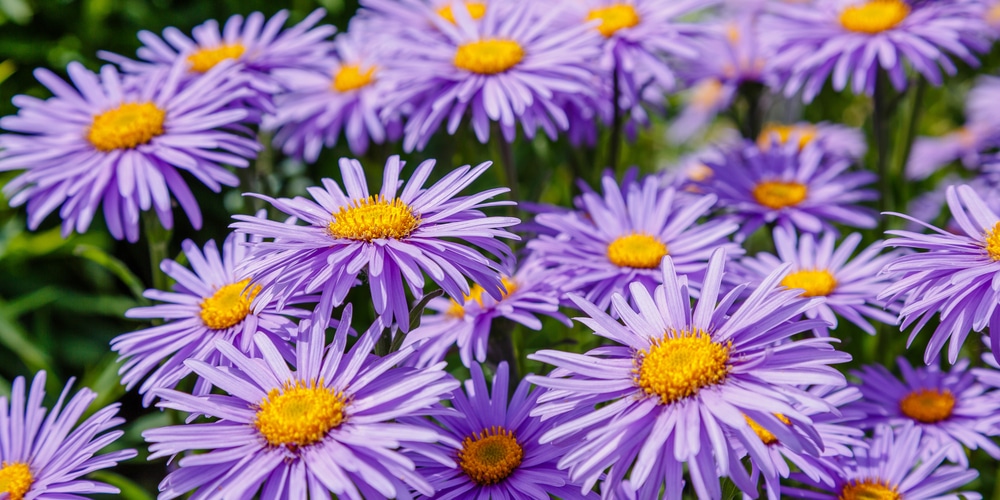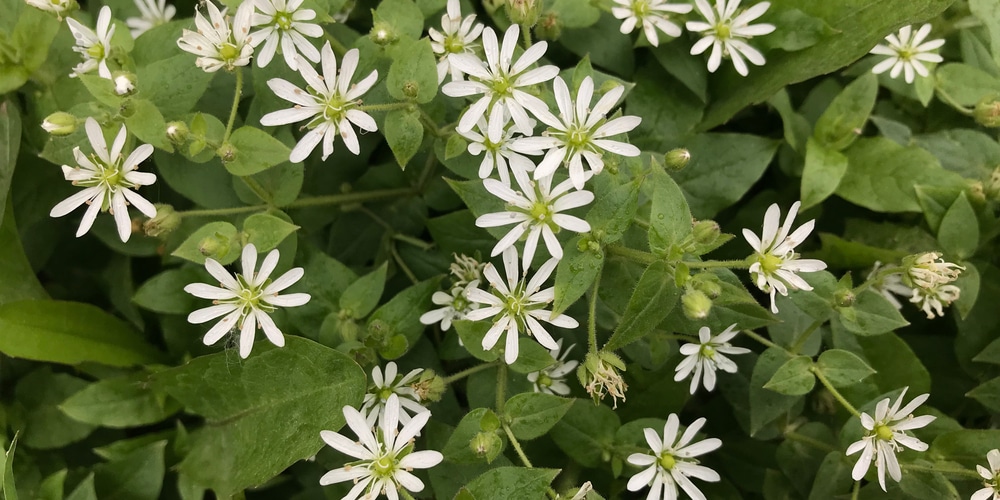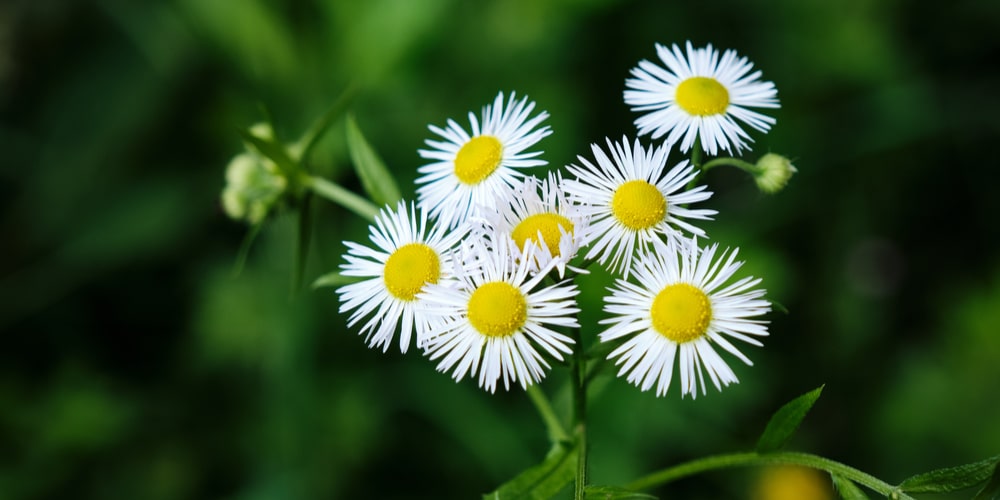Aster and fleabane are two common types of flowering wild plants that can be found in many parts of the world. These two plants have flowers that are slightly similar in appearance, with daisy-like petals that can either be white or purple to blue in appearance.
There was a time when all these plants were categorized under the genus Aster, but that is no longer the case. Modern taxonomies have seen the rise of multiple genera, with the genus Symphyotrichum carrying the majority of the species. Let’s discuss the differences and similarities of Aster vs Fleabane.
Aster vs Fleabane: Understanding the Difference

At a first glance, it can be quite difficult to tell aster and fleabane apart. Both have either white or purple-bluish narrow petals which are actual flowers known as ray flowers. The flower also has yellow centres which are also flowers known as disc flowers.
The disc flowers commonly start out yellow and then change their colour with time to become either purple or brown. It’s also possible to find both colours on disc flowers of the same plant.
Although they look quite similar, there are a few key differences between these two plants.
One of the differences that are not connected to appearance is that fleabanes will basically flower during the mid-to-late spring and early summer periods, whereas asters generally flower during the later summer and fall seasons.
When it comes to differences in appearance, fleabane flowers will have narrower petals when compared to those of Aster plants. In addition, fleabane flowers are generally known to have many petals when compared to those aster flowers.
Aster vs Fleabane: Identification
One thing that you may note about these two species is that they can both be variable in appearance, with some plants even defying identification, probably as a result of being hybrids.
That, however, does not take away the fact that you can use special details such as stem hairiness, leaf shape, and flower arrangement on the stem to identify these plants.
One of the most important terms that you should especially have in mind when it comes to the identification of this group is Phyllary. This term basically refers to the greenish base of the flower where all the petals seem to emanate from. Phyllaries are especially important when it comes to differentiating these two species which can, otherwise, appear to be quite similar.
Keep in mind that to make a positive identification of whether a plant is a fleabane or aster, however, you have to study the whole plant.
Aster identification
Asters are quite similar to fleabanes in physical appearance, with peripheral ray flowers and central disc flowers. They have hairy sticky stems with basal leaves. While those are not characteristics that can easily distinguish asters from fleabanes, they can be instrumental in making it easier to identify them.
The main identification feature that distinguishes asters from fleabanes is phyllaries. Also known as bracts, phyllaries are the base of the flower where the entire flower seems to grow from.
The phyllaries of an aster plant usually overlap in a similar manner to that of shingles. To help you visualize how they look in a more effective way, their phyllaries lie on top of each other just like shingles would when placed on a roof.
Fleabane identification
When trying to identify fleabane, you should take note of the flower heads, the stems, and finally the leaves of the plant. Fleabanes are usually identified by their hairy stems, composite flowers, and hairy leaves.
As mentioned before, phyllaries of the fleabane are usually different in appearance when compared to those of the aster plant. That’s in consideration that they are usually of the same height in a row, giving them a fence-like appearance.
And even though the fleabane is a member of the Aster family, this plant will have an earlier blooming season as mentioned before.
Aster Vs. Fleabane: Uses and Benefits
Aster and fleabane plants have many different uses and benefits.
Aster
One of the key uses of the aster plant is the application of its roots in Chinese medicine. The plant is also known to have edible leaves (best when young) and edible flowers as well. The flowers and leaves of asters are eaten either when fresh or dried.
These days, however, they are mostly used in herbal teas, food garnishing, or salads. They are said to have various health benefits including strengthening weak skin, alleviating pain, and even reducing fevers as well as treating diarrhoea.
Asters are mainly useful to the environment when it comes to attracting pollinators.
Fleabane
Just like asters, fleabanes are also wild edibles that can be eaten either raw or cooked. In truth, some individuals claim that fleabanes, when cooked, taste like spinach. Their main benefit when it comes to health is that they contain caffeic acid, which is known to have neuroprotective and antioxidant properties.
As if their edible nature is not enough as a benefit, fleabanes are also said to be insect repellent, with claims that they can repel fleas and gnats, to be specific – that’s where the plant gets its name from. Even though there is not enough evidence to support these claims, the number of people who make these claims about the plant makes it hard to ignore.
The only downside of fleabanes is that they can be somewhat invasive and difficult to get rid of when introduced into a garden. All in all, they are also great pollinator attractants and can be used in landscaping to add colour to gardens.
Aster vs Fleabane: Conclusion
Overall, whether you are an avid forager or just a nature lover in general, aster and fleabane plants are definitely worth taking a closer look at. Both have many different benefits and uses, making them a great addition to any garden.
With that said, it is important to remember that correct identification is key when it comes to foraging or using any plant for medicinal purposes. So, be sure to take your time and familiarize yourself with the characteristics of each plant before consuming or using them in any way.
You may also like: Flowers That Start with I

